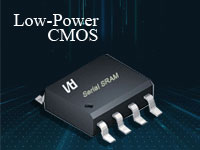Semiconductor "involution"
After recent years of industrial integration, many names such as Freescale, Fairchild, Maxim, Altera, etc., have become history. The industry structure is constantly being reshaped, but the industry trend has not changed. The future semiconductor industry will gradually tend to compete in stock. , Both market share and profitability are gradually becoming centralized.
To paraphrase the most popular saying: The semiconductor industry has already experienced serious involution.
This involution is formed based on many factors. First of all, after more than half a century of development, the European and American semiconductor industries have been quite mature, and these mature semiconductor companies have relatively stable market shares in their respective industries, so the probability of large-scale seizure of each other's market is very small.
For companies, if they want to expand their market share and seek further growth, unless there is an explosion of new technologies or mutual mergers, new technologies across the ages are not often available, so in the end they can only achieve synergy through mergers and acquisitions. Expand its own market.
Due to fierce competition, those industries with a single product application or a small market will gradually be merged and integrated by other giants to achieve a coordinated development trend. For example, Xilinx is acquired by AMD, Maxim is acquired by ADI, and Arm is acquired by NVIDIA. .
The semiconductors in the future will be more centralized, which means that the moat of giants like TI will be deeper and wider. Later challengers wanting to compete with them on the same stage are hell-level, unless they switch tracks or new technologies. Born, able to compete with giants on the same starting line.
To paraphrase the most popular saying: The semiconductor industry has already experienced serious involution.
This involution is formed based on many factors. First of all, after more than half a century of development, the European and American semiconductor industries have been quite mature, and these mature semiconductor companies have relatively stable market shares in their respective industries, so the probability of large-scale seizure of each other's market is very small.
For companies, if they want to expand their market share and seek further growth, unless there is an explosion of new technologies or mutual mergers, new technologies across the ages are not often available, so in the end they can only achieve synergy through mergers and acquisitions. Expand its own market.
Due to fierce competition, those industries with a single product application or a small market will gradually be merged and integrated by other giants to achieve a coordinated development trend. For example, Xilinx is acquired by AMD, Maxim is acquired by ADI, and Arm is acquired by NVIDIA. .
The semiconductors in the future will be more centralized, which means that the moat of giants like TI will be deeper and wider. Later challengers wanting to compete with them on the same stage are hell-level, unless they switch tracks or new technologies. Born, able to compete with giants on the same starting line.
CONTACT US
USA
Vilsion Technology Inc.
36S 18th AVE Suite A,Brington,Colorado 80601,
United States
E-mail:sales@vilsion.com
Europe
Memeler Strasse 30 Haan,D 42781Germany
E-mail:sales@vilsion.com
Middle Eastern
Zarchin 10St.Raanana,43662 Israel
Zarchin 10St.Raanana,43662 Israel
E-mail:peter@vilsion.com
African
65 Oude Kaap, Estates Cnr, Elm & Poplar Streets
Dowerglen,1609 South Africa
E-mail:amy@vilsion.com
Asian
583 Orchard Road, #19-01 Forum,Singapore,
238884 Singapore
238884 Singapore
E-mail:steven@vilsion.com
